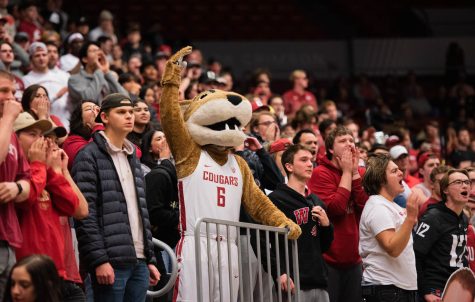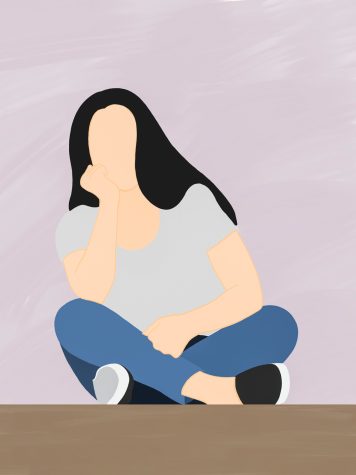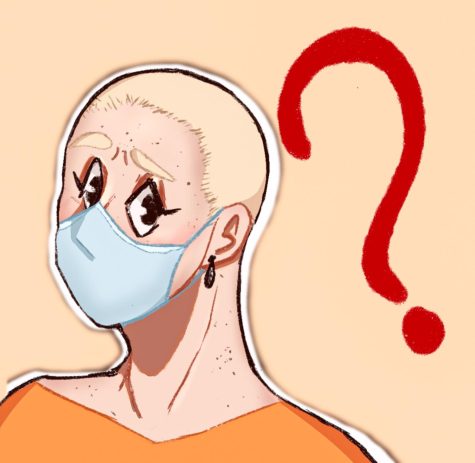OPINION: Tuition increase would hurt WSU students
In the wake of the coronavirus, students can’t afford a tuition hike
WSU’s proposed tuition increase is only going to hurt students, many of whom are financially unstable due to COVID-19.
June 24, 2020
I don’t think I need to waste time explaining the tremendous impact COVID-19 has had on so many aspects of our lives – education, I think, having received some of the largest hits.
Not only has education accessibility for students across the world changed completely, suddenly paying for it looks a lot harder, too.
WSU is proposing the maximum possible tuition increase they can put in place: a 2.5 percent increase to tuition for all students across all campuses to take effect the upcoming 2020-2021 academic year. This excludes some professional students, as their increases depend on their program.
Based on the cost of tuition for WSU Pullman’s 2019-2020 school year, this works out to be about an additional $262 per student, assuming they are Washington residents.
According to Stacy Pearson, WSU’s Chief Financial Officer, this would total about $4-5 million altogether.
For reference, this money is for mandated benefits and to cover the increase in minimum wage. Pearson said this was not to balance out lost tuition or budget cuts.
The Coronavirus Aid, Relief And Economic Security Act is a federal relief package that provided $14 billion to universities and colleges. About half of this has to go directly to students. WSU received $21.76 million from this. $10.8 million is allocated to Student Emergency Funds and as of May 20, $7.04 million has been distributed.
The remaining $10.96 million has gone directly to offsetting costs incurred transitioning from in-person to online education, Pearson said.
Pearson said WSU is taking massive budget cuts due to a projected decrease in taxpayer revenue in the next three years – a decrease expected to total at least $37.2 million. She added that WSU spent more than it received but was unable to provide the exact amount spent.
While I certainly understand WSU’s situation, and I understand that a university is a business, it is quite challenging to justify an increase in tuition when the quality of my education is going to – despite the efforts of WSU professors – decrease dramatically.
The most recent letter from WSU President Kirk Schulz on the delivery of WSU’s education this fall outlined basic goals and possibilities with an underlying message of determination to attend classes on-campus.
However, not every class will be offered in-person. Classes with over 50 students will have to meet online or offer multiple in-person sections of a course, according to the letter.
Multiple in-person sections mean “one-third taught on Monday, one-third taught on Wednesday, one-third taught on Friday,” according to Schulz’s letter. So, instead of three hours of personal instruction a week, students could receive one. All professors — regardless of the number of students — have the option to teach entirely online as well.
Pearson said training for online instruction was one of the most costly aspects of the switch to online (second to refunds for housing and dining) and is a daunting cost moving forward.
So, I’m paying more for an education that isn’t even guaranteed to be in-person? For about two-thirds of the price, I could attend an online university like University of Phoenix. That’s the price difference before the tuition increase.
“It just doesn’t really make any sense to me,” said junior biology major Hunter Straup. “As far as the world today, students are probably the ones affected pretty heavily. It doesn’t make sense to me to increase tuition and charge more from students who are already struggling.”
From my understanding, half of the CARES Act that goes to students can be distributed in the way that WSU sees fit. Right now, that’s based on the student’s expected family contribution. While the expected family contribution is already a ridiculous way to distribute aid, it’s also ridiculous to assume that the virus hasn’t affected the expected family contribution in some way. In simpler terms: this help isn’t even available for any student.
Chloe Almeida, junior English literature major, started a petition because of her deep-rooted concern for the financial impact of COVID-19 on WSU students.
“When I originally heard about the tuition increase, it was actually from the Daily Evergreen article that had come out about it,” Almeida said. “I went in and did further research and looked at the different financial records from the universities … I was a little outraged by what was happening because everyone, including students, are going through a hard time right now. I honestly don’t see how it’s feasible for the university to go through with the tuition increase like this.”
Her petition, Almeida said, is mainly to show WSU that students don’t support this increase.
“We want to have our voices heard about it,” Almeida said. “Because if something like this were to go through? Who knows how many students would actually be able to come up with the funds to continue their education.”
From the looks of it, it doesn’t seem like WSU actually wants to save students money. If this tuition increase is so necessary, but they feel so bad about it, I can’t imagine why they can’t find ways to save students money. For example, if WSU made the fee for the UREC optional, it’d save students more than half the increase of tuition.
I’m not suggesting people leave WSU, and I’m not convinced WSU is a greedy money-mongering university. But amidst a pandemic, when the quality of my education is going to be changing dramatically, it doesn’t seem like an appropriate time to ask for the maximum tuition increase possible.
To voice your opinion before the decision on June 26, email [email protected]. Students have a voice – we have a voice.
It’s time to use it.


















NEAL KELLNER • Jun 27, 2020 at 9:22 pm
As an alumni and Washington State taxpayer I agree tuition is way, way, way too high. Issue is lack of funding from DC and failure of state to properly tax those of us who can afford to pay for education… i.e. corporations and the upper 10%.
How can you make this happen? Think BLM! Protest! And not just WSU students.
Instead contact, help organize, and team with groups from other state colleges… and contact and encourage high school kids from schools across the state (many of whom are already priced out of college). Together you have the numbers needed to get attention of state lawmakers. And I suggest contacting alumni you know for support in terms of time or money… to help you get this going.
Large ongoing protest is the only thing state government will listen to regarding this issue. Keep in mind your competition here is the rich and corporations… the same folks who finance campaigns. To counter them the only tool you have available is protest and the power of public opinion effective protests generate. You can petition and go to the legislature a 1000 times… but it is a waste of time… no change will happen.
You are out of school for the summer, many of you have no jobs or even prospects of a job, and all of you are frustrated and angry at what is happening. Use the time COVID has created in your life to make change now… else spend your summer worrying about the increased student loans you will have from your ever increasing tuition.
It is your time and your money… and your call. Either be silent and suffer, or organize and protest state wide.
I hope the latter… and look forward to joining your protests.
Go Cougs!
Neal Kellner